The Peninsula
Korea Aims to Reach Carbon Neutrality by 2050
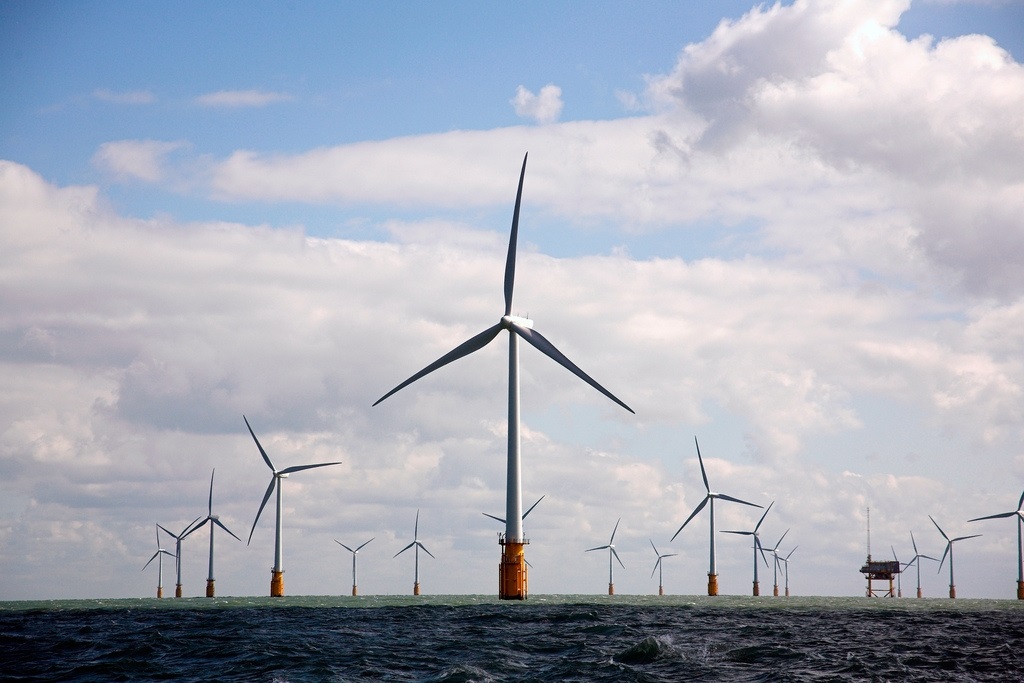
President Moon Jae-in pledged in October 2020 that Korea will reach carbon neutrality by 2050, joining a number of European countries and Japan. With China aiming to be carbon neutral by 2060, Korea becomes the third big Asian economy to announce a target for achieving carbon neutrality. Korea’s objective is in line the Intergovernmental Panel on Climate Change’s calculation that worldwide CO2 emissions resulting from human activity should reach net zero around 2050 to meet the Paris Agreement’s target of limiting the rise in the global temperature to “well below 2 degrees centigrade” (3.6 degrees Fahrenheit). President Moon stated that Korea will “actively innovate and lead the international community by seizing the global climate crisis response as an opportunity for inclusive, sustainable growth”.
Carbon neutrality is an ambitious target for Korea, given that the growth in its greenhouse gas (GHG) emissions has been among the highest in the world. In 2015, Korea committed to reducing GHG emissions by 37% relative to business-as-usual by 2030 – equivalent to a 20% decline relative to its 2010 level. Korea’s carbon intensity (carbon emissions per unit of GDP) has remained steady since 2014, increasing the gap with the OECD area (Figure 1, Panel A). In 2017, Korea was the fifth largest GHG emitter in the OECD, reflecting several factors. First, Korea’s energy intensity (energy used per unit of GDP) is much higher than the OECD area (Figure 1, Panel B), in part due to its large manufacturing sector and its low price for electricity, which encourages energy consumption.
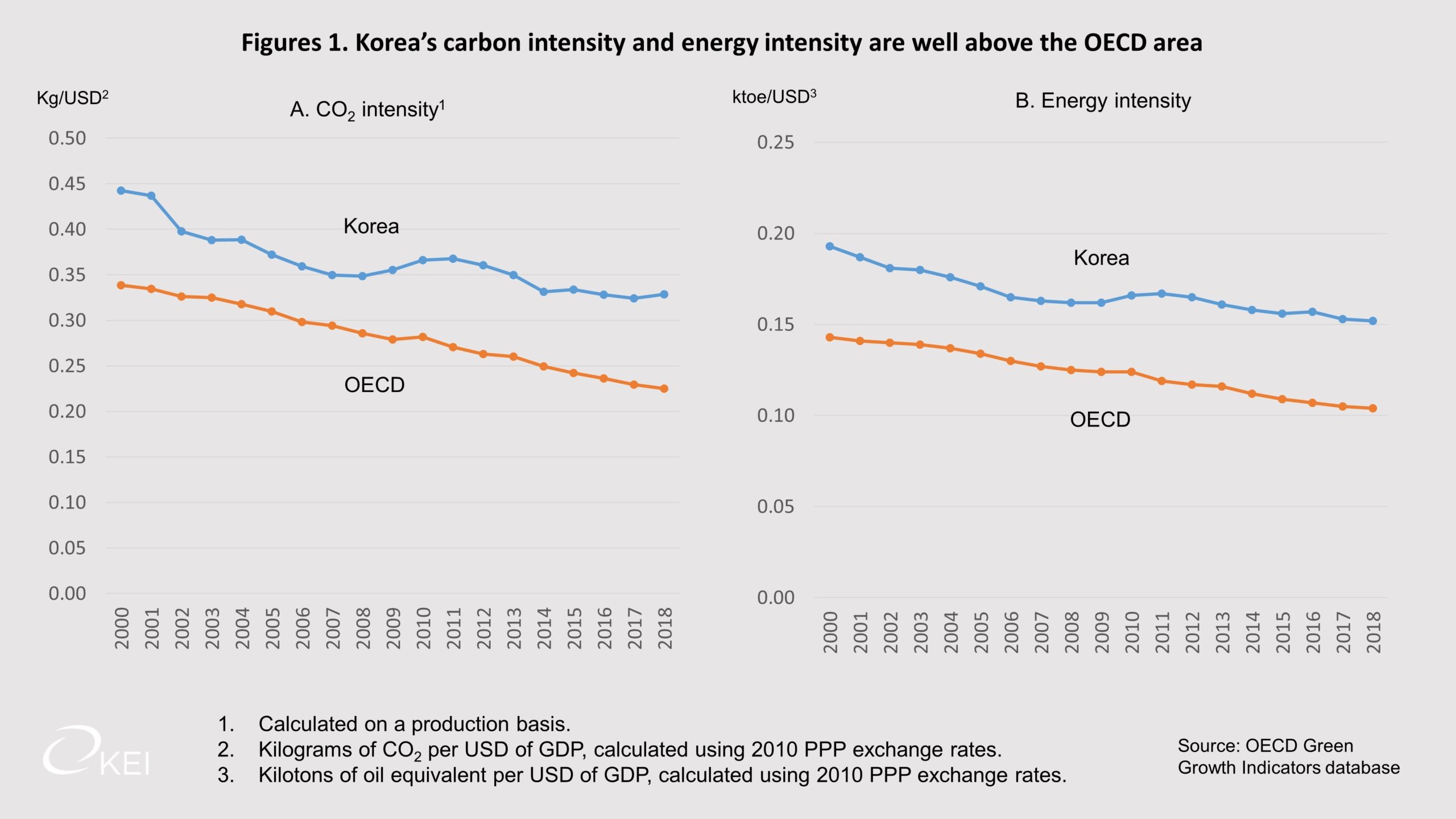
Korea’s high carbon intensity is also explained by its fuel mix. Fossil fuels (coal, oil and natural gas) accounted for 84% of Korea’s primary energy supply in 2017 (Figure 2). Nuclear power, a carbon-free source of energy, is relatively important in Korea, but is being phased out. By 2030, 11 of the country’s 25 nuclear power points are to be closed as part of the plan to end Korea’s use of nuclear power by 2060.
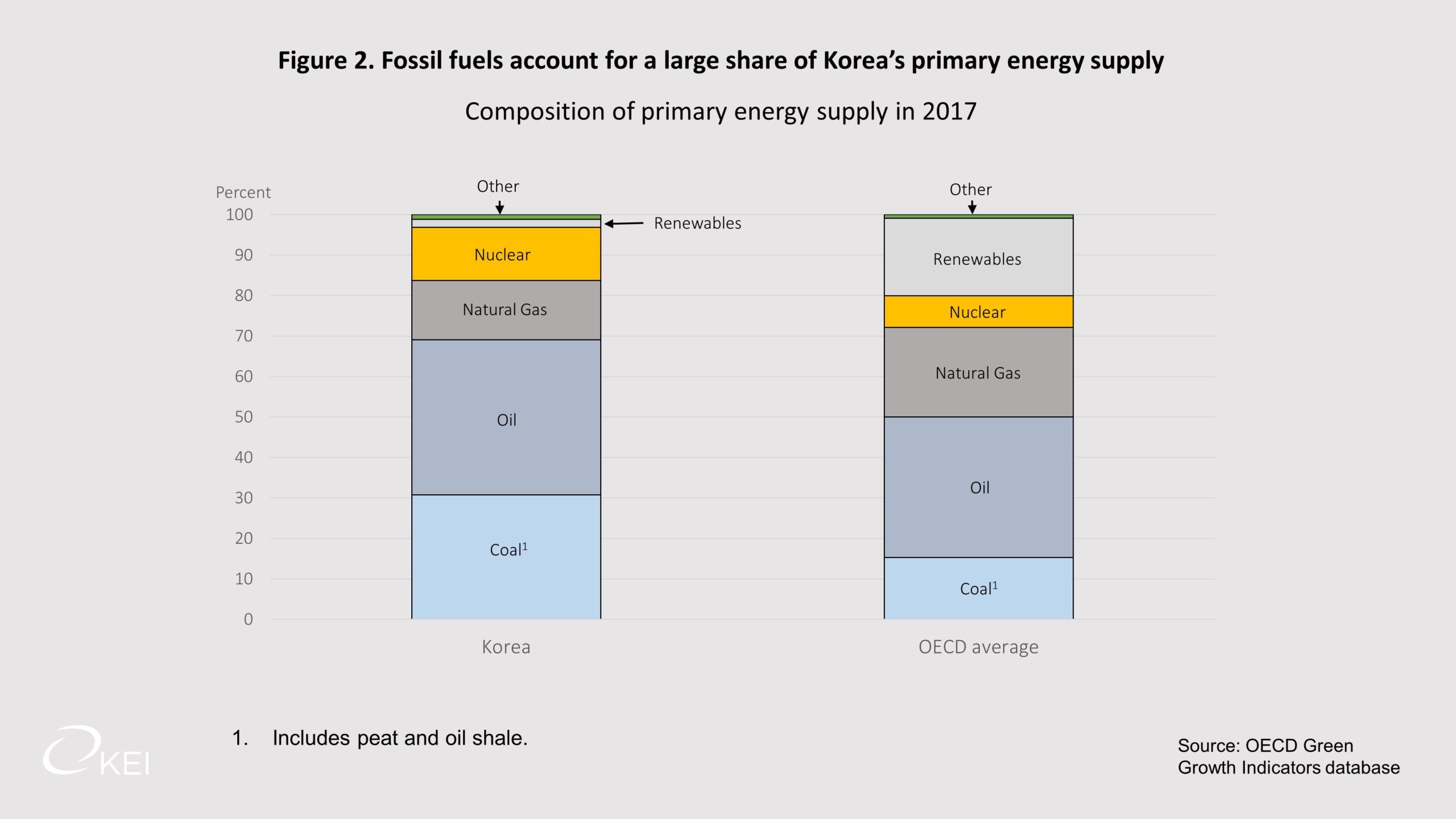
Reducing the carbon content of electricity
Achieving carbon neutrality requires decarbonizing electricity by expanding renewable energy and phasing out the use of coal. Korea’s Green New Deal, which was launched in 2020, aims to support the transition to renewable energy. In 2018, renewable energy accounted for only 2% of Korea’s primary energy supply, the lowest among OECD countries (Figure 3), and 8.3% of electricity generation. Electricity prices have been kept low to support industrial competitiveness and affordability for households, thereby spurring a rapid increase in electricity demand and boosting GHG emissions (OECD, 2017). Low, regulated electricity prices have also hindered the entry of renewables and investment in technology that would help integrate intermittent renewable energy sources, such as wind and solar power, in the electricity grid (OECD, 2020).
The government aims to boost the share of renewables in electricity generation to 20% by 2030 and 30-35% by 2040. Wind and solar power are projected to account for more than 90% of renewable energy. The cost of the transition is expected to be mitigated by a drop in the price of wind and solar energy, making them as cheap as other sources, including coal, from 2028. Korea should gradually raise electricity prices to bring them into line with costs, while supporting households hurt by higher energy prices (OECD, 2020).
Coal, a high-carbon source of energy, accounts for 28% of Korea’s primary energy supply, about double the OECD average. The long-term energy supply plan announced by the Ministry of Trade, Industry and Energy at the end of 2020 set a target of reducing its share to 15% by 2034 by shutting 30 coal-fueled power plants that could have operated for 30 years. The Powering Past Coal Alliance, a group that includes 34 countries, argues that OECD countries should complete the phase-out of coal by 2030 in order to meet the Paris Agreement (Powering Past Coal Alliance, 2017). The United Kingdom, which reduced the share of coal in electricity generation from around 40% in 2012 to close to zero, is often cited as an example in this regard.
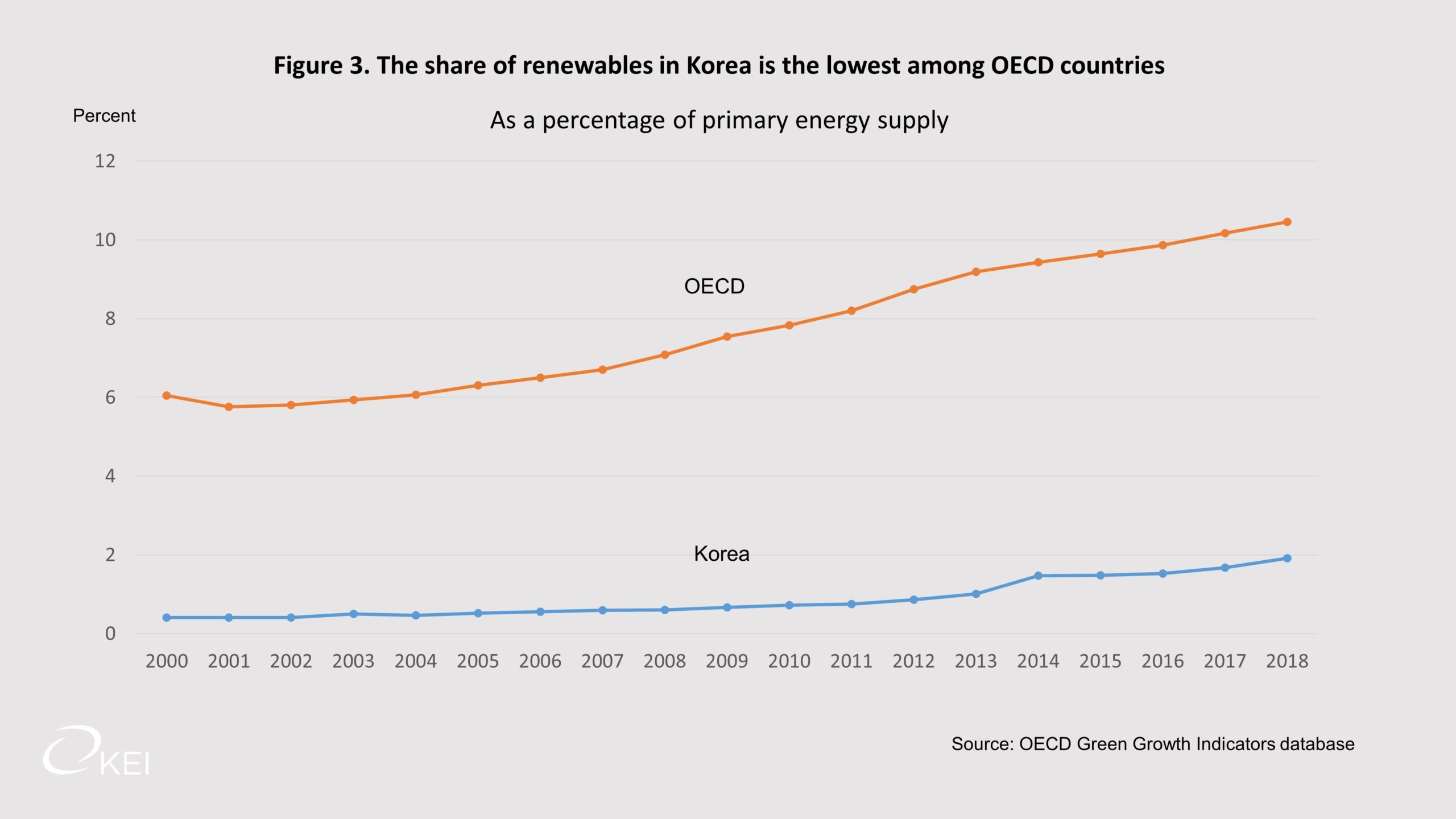
Improving Korea’s emissions trading system
Korea’s GHG emissions trading scheme (ETS), which was launched in 2015, is now the largest in the world after the EU scheme. Putting a price on GHG emissions through an ETS (or alternatively a carbon tax) is crucial to achieve carbon neutrality. In the short run, it minimizes the cost of reducing emissions by equalizing the marginal abatement cost across all individual emitters for any reduction objective. Over the long run, a market-based instrument such as the ETS provides incentives for firms to develop new technologies to help lower future abatement costs. From the perspective of investors, a clear and credible price for carbon is needed as early as possible to make appropriate investment decisions. Using an ETS or a carbon tax, the authorities only need to specify the appropriate level of emissions and then rely on price signals to achieve it, thus avoiding the cost and inefficiency of using a regulatory approach (Jones and Yoo, 2011).
Korea’s ETS is a cap-and-trade system in which firms trade permits that allow them to emit a given amount of greenhouse gases. The cap set by the government defines the maximum level of total emissions permitted. Korea’s ETS covers 525 companies which produce nearly 70% of the country’s GHG emissions. In the first phase (2015-17), all permits were free. In the second phase (2017-20) 3% were auctioned and the share was raised to 10% in the third phase (2021-25).
Korea should increase the share of permits that is auctioned; free allocation harms incentives to reduce emissions, as permits are allocated according to criteria, such as production, that are related to emissions. It is also important to gradually reduce the cap on emissions, which would lead to higher permit prices. Only 16% of permits in Korea’s ETS in 2018 were priced above EUR 60, compared to 56% in Norway and around one-third in Italy, Switzerland and France (Figure 4).
Environmental considerations
Reducing GHG emissions would also improve Korea’s environment. In 2017, Korea’s environmental quality ranked second to last in the OECD’s Better Life Index. Indeed, air pollution was declared a “social disaster” in 2019, resulting in emergency government spending to address the problem. As discussed in the 2020 OECD Economic Survey of Korea, most Koreans are exposed to small particle air pollution that is above the threshold set by the World Health Organisation (WHO), substantially raising premature mortality. In Seoul, small particle concentration is about twice the WHO ceiling. Domestic sources — notably industry, power plants and diesel vehicles – are responsible for about half of small particle air pollution, with the rest coming from other countries, notably China (the fine dust issue).
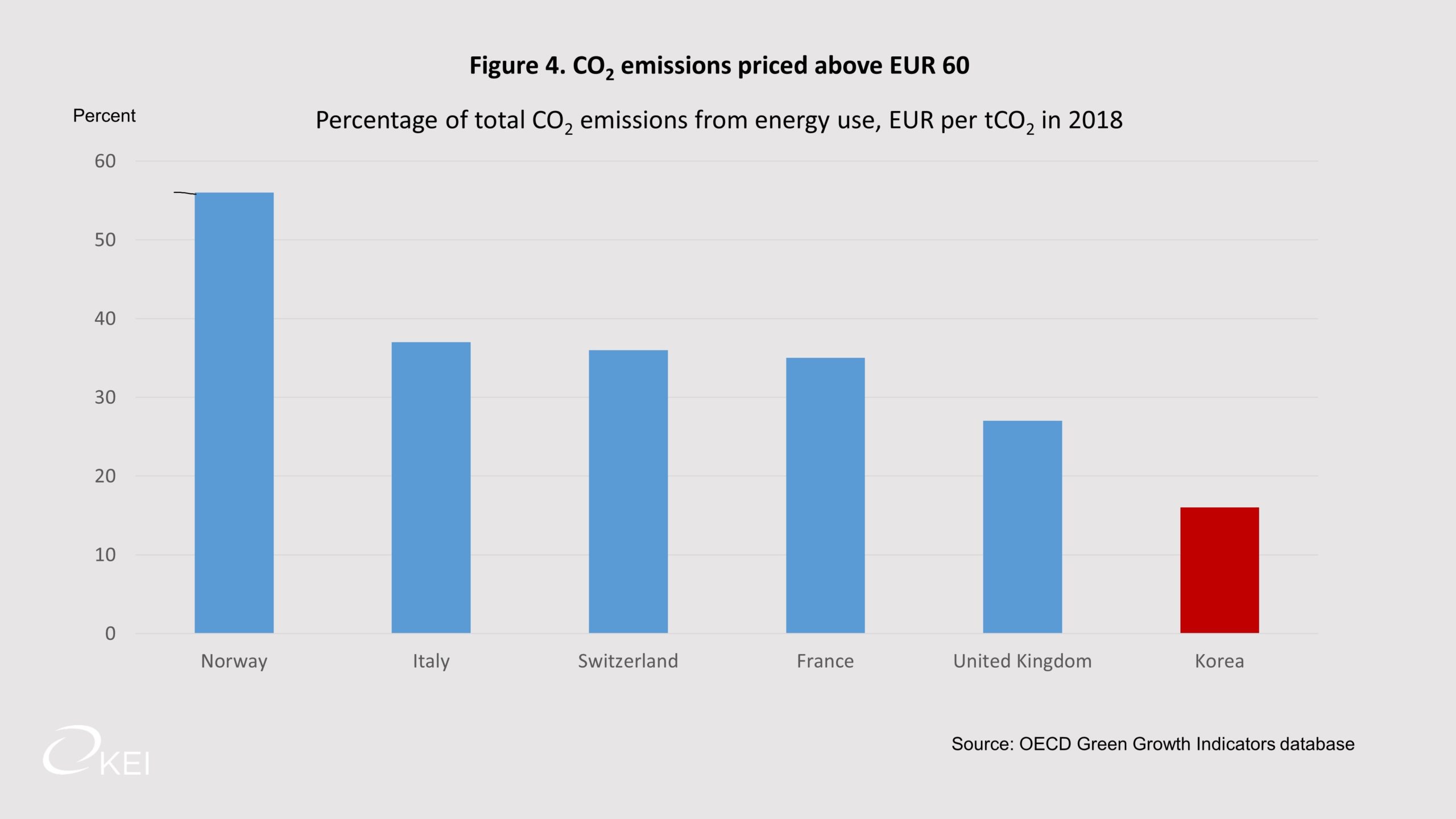
Conclusion
Korea needs to carry out its plans to achieve carbon neutrality to slow climate change and improve well-being by improving environmental conditions. This requires sharply expanding renewables, phasing out coal and improving the ETS. Given that Korea is more vulnerable to climate change than many OECD countries, it also needs to pursue adaptation measures in parallel to cope with challenges such as rising precipitation and sea levels and more frequent extreme weather.
Randall Jones is a Non-Resident Fellow at the Korea Economic Institute of America. The views expressed here are the author’s alone.
Photo from Vattenfall Nederland’s photostream on flickr Creative Commons.
Sources
Jones, R. and B. Yoo (2011), “Korea’s Green Growth Strategy: Mitigating Climate Change and Developing New Growth Engines”, OECD Economic Working Papers, No. 798, OECD Publishing, Paris.
OECD (2020), OECD Economic Survey of Korea, OECD Publishing, Paris.
OECD (2020), OECD Environmental Performance Reviews: Korea 2017, OECD Publishing, Paris.
Powering Past Coal Alliance (2017), Declaration, https://poweringpastcoal.org/about/declaration.
